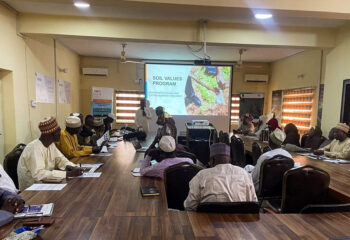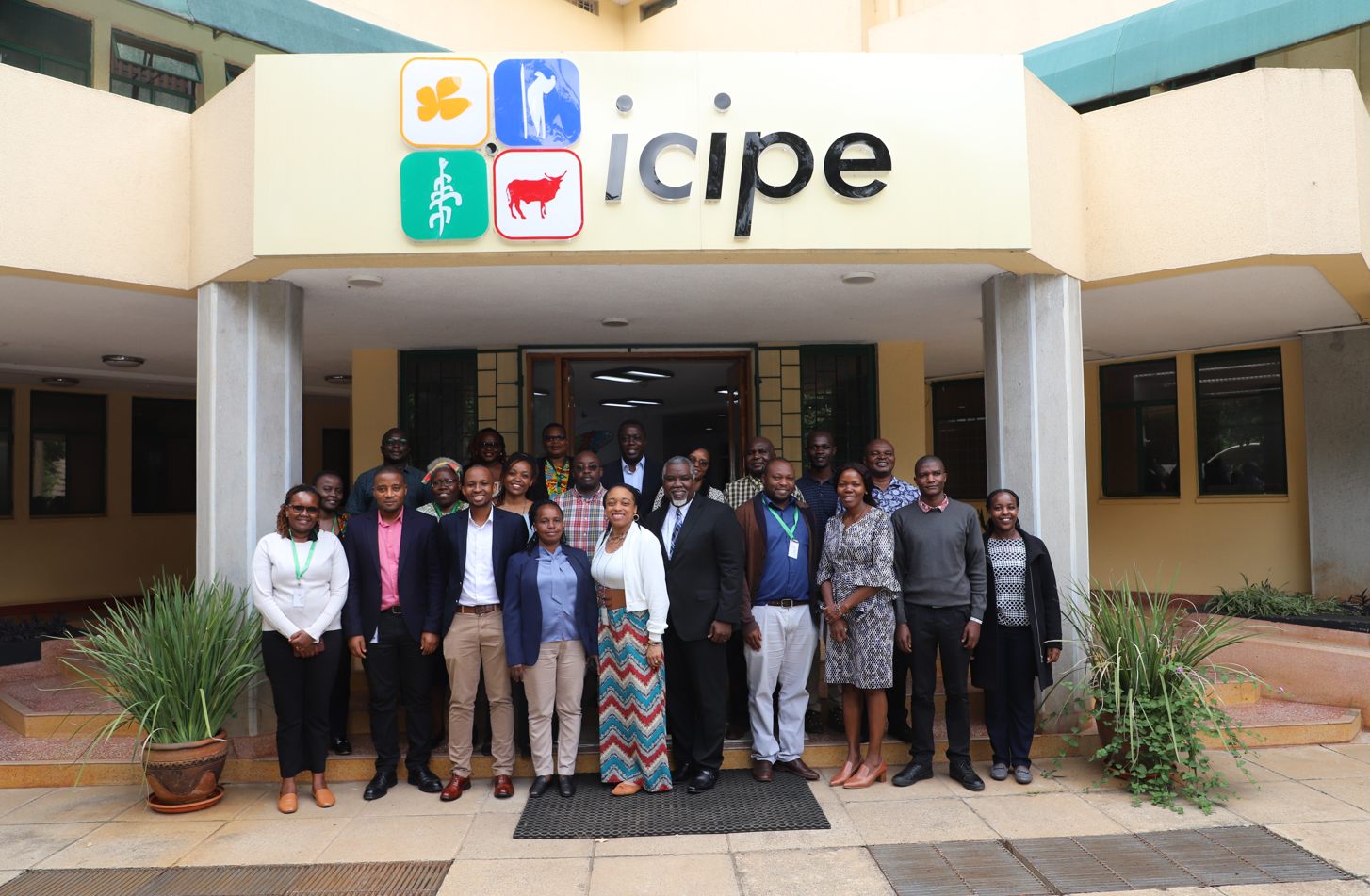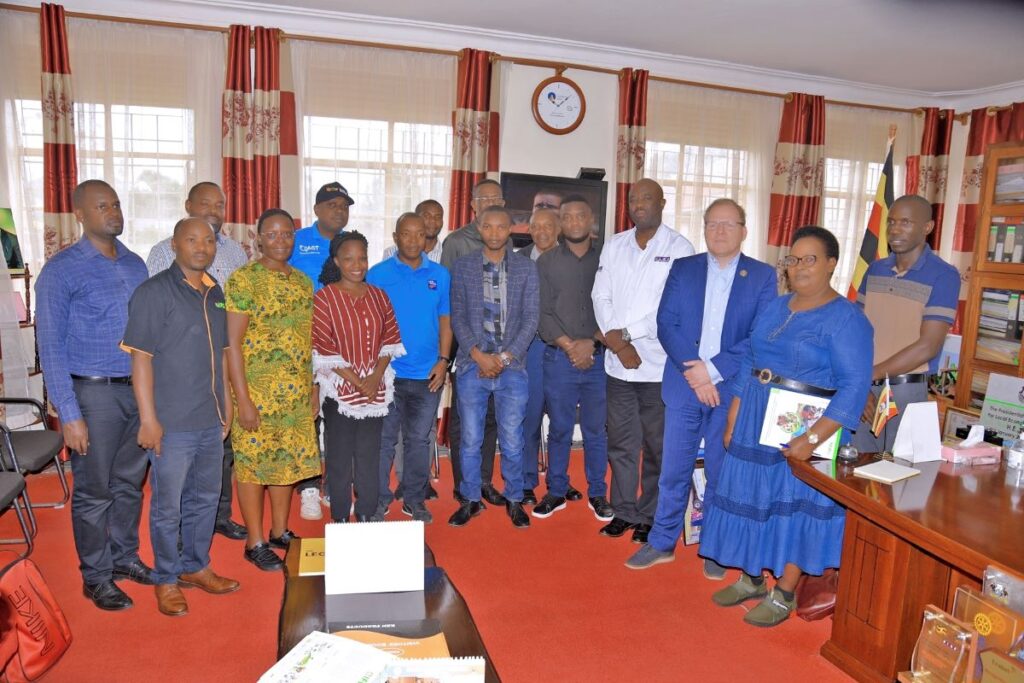
The week of November 27-December 1 was a whirlwind of activities for the IFDC team in Uganda, as they hosted the organization’s President and CEO, Henk van Duijn. Van Duijn met with current and prospective donors, government officials, implementing partners, beneficiaries, and staff during his eventful visit.
The meetings focused on relationship building and identifying areas of collaboration and synergies. Uganda’s Ministry of Agriculture, Animal Industry, and Fisheries (MAAIF) took part in all the meetings van Duijn attended.
“We are also in the process of renewing our Memorandum of Understanding [with IFDC] and it is in the final stages. We’ve been able to see that some farmers receive screen houses and low-cost warehouses for potatoes in previously implemented projects by IFDC, changing the livelihoods of many and contributing greatly to our economy,” said Peter Dhamuzungu, MAAIF Commissioner of Crop Production.
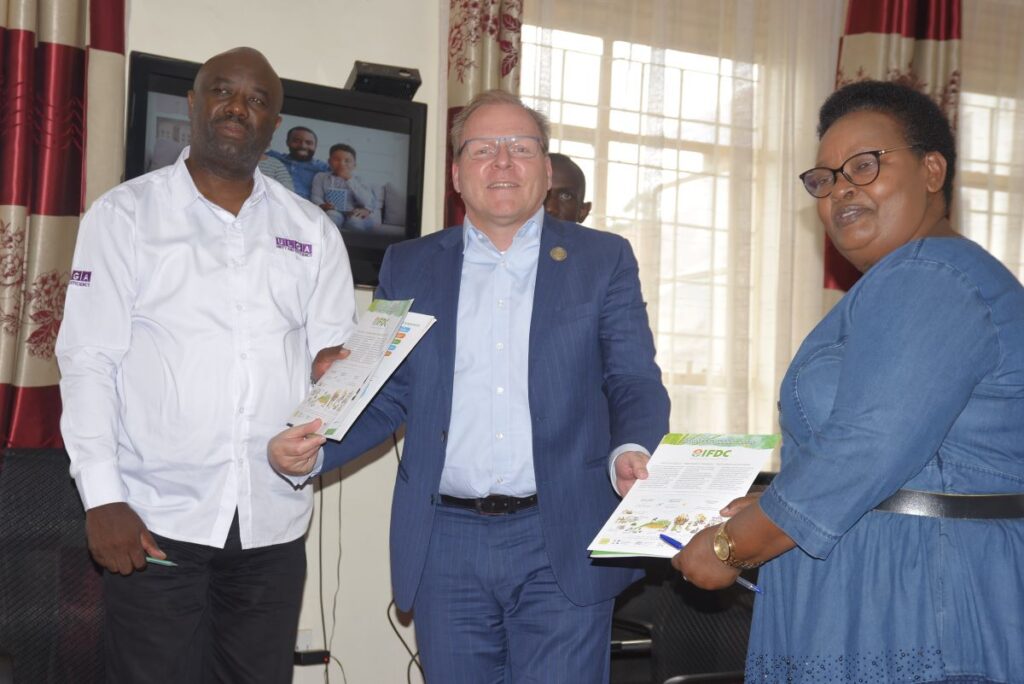
Dhamuzungu highlighted the need to address the issues of post-harvest handling and limited access to quality seeds. He shared that there is a great amount of capacity building being provided to farmers by different implementing partners, but there needs to more of a mindset change with regard to better agronomic practices.
Hon. Victoria Rusoke Busingye, Minister of State for Local Government, and Hon. Richard Rwabuhinga, Kabarole District Chairman, expressed appreciation for IFDC’s work to support communities in having the infrastructure to access markets, health facilities, and schools.
“When the roads are bad, it means people cannot take their goods to the market or hospital. Buyers will also have difficult access to villages to buy produce. We are hopeful that with [IFDC’s] interventions, communities will benefit a lot, as the district leaders also support supplying culverts, marram, and equipment. I am happy to have met the IFDC President and CEO in Uganda, as this marks the start of a journey to improve our communities,” explained Busingye.
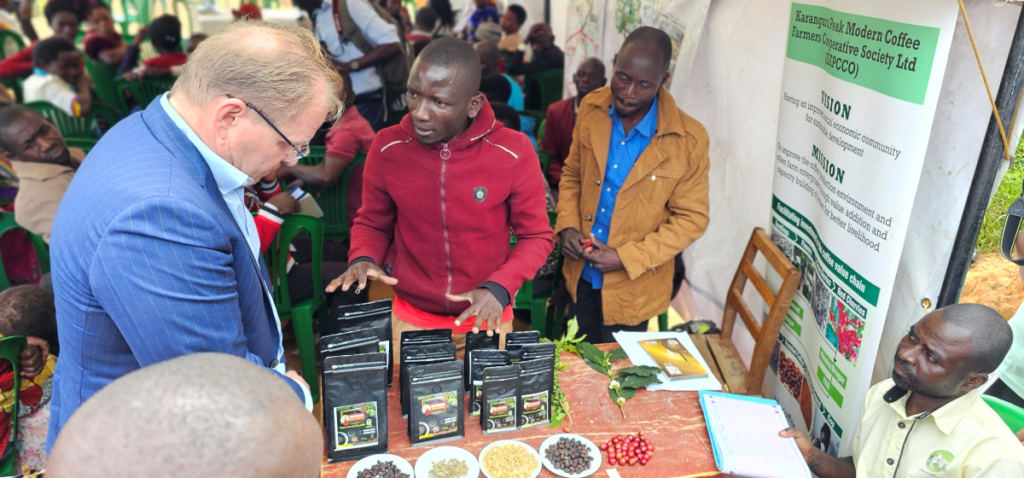
Speaking to various stakeholders, van Duijn emphasized the need for projects that are holistic in nature and the benefits of working with the private sector, saying, “It’s crucial to engage with local private sector partners involved in processing products and serving consumers. Understanding market demand enables the development of new products, creating a direct connection to farmers for the required raw materials. Establishing this link beyond selling to aggregators, and directly to consumers, ensures a confirmed demand that translates into increased income for farmers.”
Van Duijn also mentioned that IFDC is now implementing projects with cohesion to promote the exchange of beneficial ideas and to focus on the promotion of soil health and restoration. During his visit, he spent considerable time meeting with and listening to IFDC staff and conducted one-on-one meetings with each staff member.
“The welfare of IFDC staff is key to the success of our projects and our beneficiaries. We shall endeavor to address the challenges that our teams might be facing to have a smooth flow of implementation.”
Henk van Duijn, IFDC President and CEO
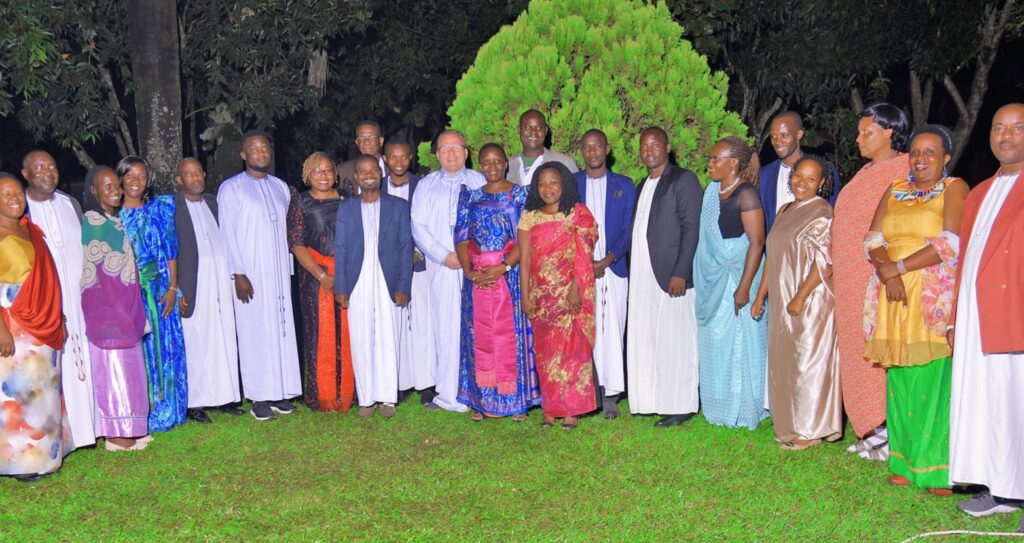
“I am very happy that the president took the time to listen to our issues. His commitment to ensuring that we are working in a conducive environment gives us the morale to wake up every day to serve,” one staff member said.
During van Duijn’s visit, communities of the Building Resilience and Inclusive Growth for Highland Farming Systems for Rural Transformation (BRIGHT) project were able to share their future visions and implementation plans, exhibiting solutions to their challenges. BRIGHT uses the Integrated Farming Plan (Plan Intégré du Paysan, or PIP) approach, in which communities are asked to draw maps showing their current environment and social and economic status and then draw vision maps indicating their desired future.
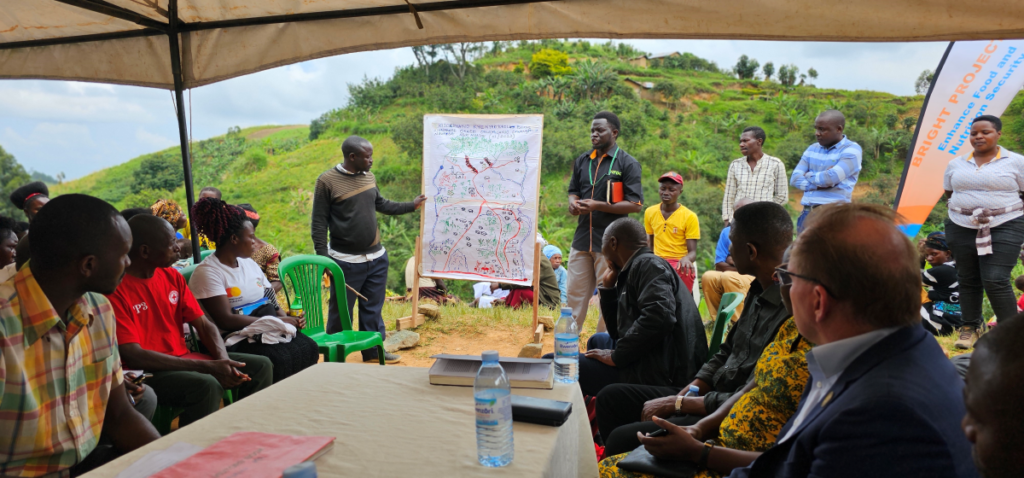
The presentation included a PIP village map of the work plan of Nyakitokoli Village and a nutrition exhibition led by nutrition champions. Van Duijn was able to observe some of the activities already being conducted by the community, including the Nyakitokoli Road and water conservation trenches.
Van Duijn’s visit to Uganda not only enhanced collaboration but also served as a catalyst for meaningful engagement and knowledge sharing, further solidifying the foundation for ongoing partnerships and positive transformation in the country.
The Building Resilience and Inclusive Growth for Highland Farming Systems for Rural Transformation (BRIGHT) project, funded by the Netherlands Ministry of Foreign Affairs through the Embassy of the Kingdom of the Netherlands, seeks to build the resilience capacity of farm households and farming systems to increase income and food and nutrition security of all farmers and transform households from subsistence-oriented farm households to more market-oriented farmers, targeting over 106,560 Ugandan highland farmer households in Kigezi, Mt. Elgon, and Rwenzori regions.

